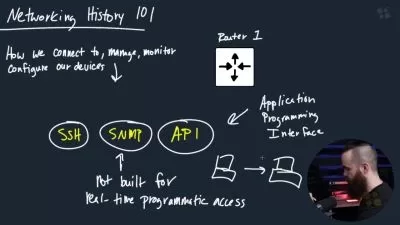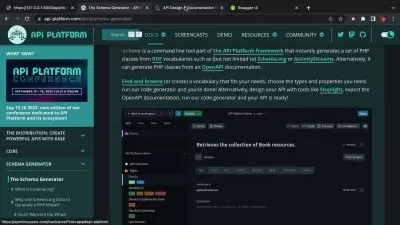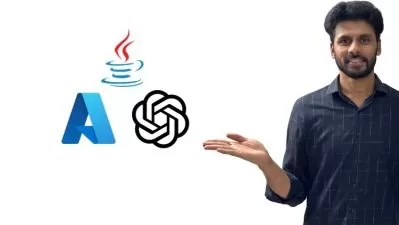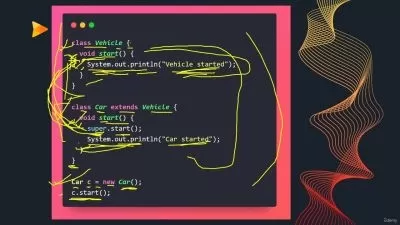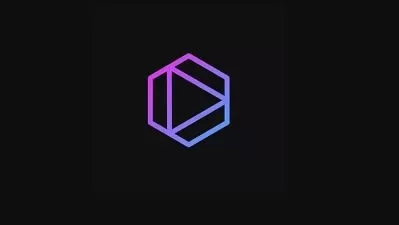01 - Course Overview.mp4
01:35
02 - Introduction to the Course, What Are You Going to Learn.mp4
02:50
03 - Who Are You What Should You Know to Follow This Course.mp4
00:56
04 - Agenda of the Course.mp4
01:54
05 - Agenda of This Module.mp4
00:40
06 - Introducing the Java Reflection API - Class, Field, and Method.mp4
01:40
07 - Introducing the Class Named Class, Getting an Instance of Class.mp4
01:37
08 - Getting a Class Instance Using the Object.getClass() Method.mp4
03:09
09 - Getting a Class Instance from the Name of the Class.mp4
02:44
10 - Wrapping up the Three Patterns to Get a Class Object.mp4
00:45
11 - Getting the Super Class and the Implemented Interfaces of a Class.mp4
02:18
12 - Getting the Declared and Non Declared Fields of a Class.mp4
04:12
13 - Getting the Methods and the Constructors of a Class.mp4
02:56
14 - Reading the Modifier to Tell if a Class Member Is Public.mp4
04:02
15 - Demo - Using the Reflection API to Read Fields and Methods .mp4
06:34
16 - Module Wrap Up.mp4
00:58
17 - Introduction to the Module and Agenda.mp4
01:10
18 - Introducing the Mapping of Objects to Databases, XML, and JSON.mp4
00:52
19 - Creating a Metamodel by Adding Annotations to Fields.mp4
02:16
20 - Using the Reflection API to Read and Write a Field of an Object.mp4
03:56
21 - Making a Field Accessible to Reading from Outside its Class.mp4
02:57
22 - Designing an EntityManager for Reading and Writing to a Database.mp4
02:18
23 - Demo - Designing a Generic Metamodel.mp4
03:26
24 - Demo - Adding Application Specific Annotations to a Bean.mp4
01:45
25 - Demo - Setting the Retention Policy of an Annotation.mp4
01:42
26 - Demo - Implementing the Generic Metamodel.mp4
03:29
27 - Demo - Running the Generic Metamodel.mp4
01:52
28 - Module Wrap Up.mp4
01:03
29 - Introduction to the Module and Agenda.mp4
01:21
30 - Introducing the Database Server and the Person Bean.mp4
01:37
31 - Demo - Setting up the Project and Its Dependencies.mp4
02:13
32 - Demo - Runnning the H2 Server and Launching SQL Requests.mp4
03:58
33 - Demo - Writing the Pattern to Create and Persist Person Instances.mp4
01:40
34 - Demo - Creating and Implementing the EntityManager Interface.mp4
03:44
35 - Demo - Building the SQL Query to Insert a Person Bean.mp4
04:52
36 - Demo - Preparing the Statement to Execute the Query.mp4
03:30
37 - Demo - Setting the Primary Key Value to the Insert Statement.mp4
04:02
38 - Demo - Setting the Field Values to the Statement.mp4
04:14
39 - Demo - Running the EntityManager to Persist Person Instances.mp4
02:43
40 - Demo - Creating the Find Pattern and the Select Query.mp4
03:27
41 - Demo - Setting the Primary Key Value to the Select Statement.mp4
02:17
42 - Demo - Creating an Instance of the Object Read from the Database.mp4
01:45
43 - Demo - Setting the Primary Key Value to the Object.mp4
02:22
44 - Demo - Setting the Column Values and Reading the Objects.mp4
02:58
45 - Demo - Creating an EntityManager Specific to a Database .mp4
02:38
46 - Demo - Closing Properly the PreparedStatement and ResultSet.mp4
01:00
47 - Demo - Specifying the Mapping through the Annotations.mp4
04:05
48 - Module Wrap Up.mp4
01:43
49 - Introduction to the Module and Agenda.mp4
01:48
50 - Applying Dependency Inversion Using Dependency Injection.mp4
01:40
51 - Designing an EntityManager Independent of the Database.mp4
01:56
52 - Designing a BeanManager to Perform Dependency Injection.mp4
03:33
53 - Getting and Invoking Methods Using the Reflection API.mp4
02:35
54 - Demo - Preparing the Project for Dependency Injection.mp4
01:40
55 - Demo - Updating the EntityManager with Dependency Injection.mp4
02:35
56 - Demo - Creating the BeanManager to Create the EntityManager.mp4
01:34
57 - Demo - Associating Types to Creation Recipes in the BeanManager.mp4
06:09
58 - Demo - Injecting the Connection Value to Provide the EntityManager.mp4
04:25
59 - Module Wrap Up.mp4
01:25
60 - Introduction to the Module and Agenda.mp4
01:11
61 - Spotting Security Checks While Calling Reflection Code.mp4
02:06
62 - Introducing MethodHandles VarHandle and the Lookup Object.mp4
01:34
63 - Getting a Private Trusted Lookup Object.mp4
01:13
64 - Using a Method Handle to Get a Reference on a Class.mp4
00:49
65 - Creating MethodType Object to Get a Reference on a Method.mp4
03:44
66 - Getting a Method Handle on a Method or a Constructor.mp4
02:19
67 - Getting a Method Handle to Read and Write a Field.mp4
02:32
68 - Using a Method Handle to Invoke a Method of a Class.mp4
01:52
69 - Accessing Public and Private Fields Using Method Handles.mp4
04:56
70 - Adding Concurrent Field Access Using the VarHandle API.mp4
01:49
71 - Using VarHandle to Gain Concurrent Access to Fields.mp4
02:21
72 - Demo - Creating Person Beans Using Method Handles on Constructors.mp4
03:52
73 - Demo - Invoking Methods Using Method Handles.mp4
02:02
74 - Demo - Reading and Writing Private Fields Using Method Handles.mp4
03:11
75 - Course Wrap Up.mp4
03:25
File.zip






